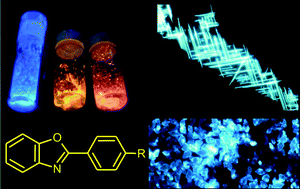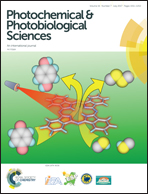2-Phenylbenzoxazole derivatives: a family of robust emitters of solid-state fluorescence
Abstract
The derivatives of 2-phenylbenzoxazole (PBO) are popular fluorescent organic dyes for use in solution or after dispersion in an appropriate matrix. Their spectroscopic behavior in the solid state is, unjustly, not so well known. Many of them are strongly emissive as pure solid dyes, due to a favorable crystal packing mode. The PBO fragment lends itself well to relatively simple modifications of its chemical structure, aimed at enlarging the conjugated π-electron system. Many molecules thus designed show aggregation-induced emission (AIE). Furthermore, the derivatives of 2-(2′-hydroxyphenyl)benzoxazole (HBO) are familiar excited-state intramolecular proton transfer (ESIPT) dyes. They are particularly well suited for solid-state sensing. Mechanofluorochromism is also observed in complexes and closely-related compounds. Regarding their self-association properties, the general tendency of many PBO derivatives is to give elongated nano and microparticles. Very small chemical changes are enough to tune the shape and size of these particles. Nanofibers may be obtained by simple preparation methods and are of great value for wave-guiding. For all these reasons, as well as for its robustness and high photo- and thermal stability, the PBO fragment is an attractive building block to access new molecules that will be particularly well adapted for developments in the field of photoluminescent materials.

- This article is part of the themed collection: 2017 Perspective articles collection

 Please wait while we load your content...
Please wait while we load your content...